Related Research Articles

Nakskov is a market town on the island of Lolland in south Denmark. The town has a population of 12,456 and is the largest town on the island of Lolland. It is located in Lolland municipality in Region Sjælland.

Falster is an island in south-eastern Denmark with an area of 486.2 km2 (187.7 sq mi) and 43,398 inhabitants as of 1 January 2010. Located in the Kattegat, Belts and Sound area, it is part of Region Zealand and is administered by Guldborgsund Municipality. Falster includes Denmark's southernmost point, Gedser Odde, near Gedser.

Lolland Municipality is a kommune on the island of Lolland in the Region Sjælland of Denmark. According to Municipal And Regional Key Figures (www.noegletal.dk) it covers a total area of 885.40 km2 and has a population of 39,632. The western part of Guldborgsund Municipality, the southernmost in Denmark, occupies the eastern part of the island (Østlolland).

Lolland is the fourth largest island of Denmark, with an area of 1,243 km2 (480 sq mi). Located in the Kattegat, Belts and Sund area, it is part of Region Sjælland. As of 1 January 2022, it has 57,618 inhabitants. Lolland is closely connected to the island of Falster to its east. The locality of Sundby forms a cross-island urban area with Nykøbing Falster, the largest conurbation partially on Lolland. The most populated settlement on Lolland proper is Nakskov.

Holger Aagaard Hammerich was a Danish engineer and politician for the party Højre. He played a significant role in the foundation of the Freeport of Copenhagen in the 1890s as well as in the planning of rail lines and stations in Copenhagen. He was a member of the Danish Parliament from 1890 until his death in 1915 and represented his party in the negotiations leading up to the amendment of the Danish Constitution in 1915.
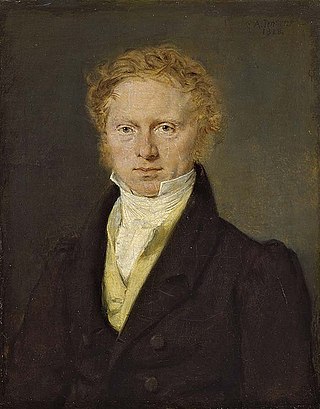
Hans Puggaard was a Danish merchant and shipowner who founded H. Puggaard & Co. in 1813. The company became a leading wholesaler of grain and was also active in the market for import of goods such as coffee and especially sugar. Puggaard was also an important philanthropist dedicating much of his fortune to social causes.
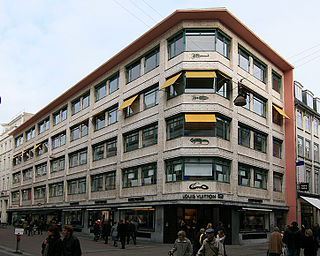
Svane Apotek, which existed from 1660 to 1994, was one of the first pharmacies to open in Copenhagen, Denmark. It was in 1849 acquired by Alfred Nicolai Bentzon and was owned by the Benzon family until 1967. Its former building. a five-storey, Functionalist property located at the corner of Østergade and Ny Østergade, was listed on the Danish registry of protected buildings and places by the Danish Heritage Agency in 1992.
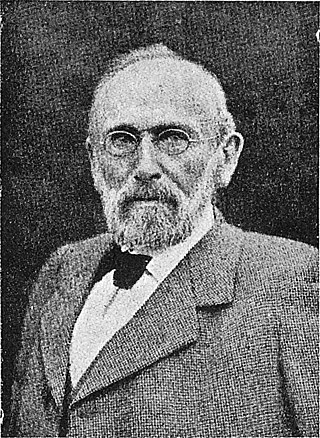
Gustav Adolph Hagemann was a Danish engineer and businessman. He was chief technical officer of the Danish Sugar Factories from 1872 to 1897 and then served as chairman of the board until 1916. He owned several sugar plantations on Saint Croix in the Danish West Indies.

Christian Ditlev Ammentorp Hansen was a Danish pharmacist and industrialist. He founded Christian Hansen's Technical-Chemical Laboratory, which revolutionized the production of wholesome dairy products in the 1870s. He also had a key role in the establishment of the Danish Pharmaceutical College in Copenhagen in 1892, financing its first building in Stockholmsgade out of his own pocket. He owned Mullerup on Funen and Bøstrup at Slagelse.
Højbygård is a manor house and estate located on the island of Lolland in southeastern Denmark. It has since 1825 belonged to members of the Lehn family. The current main building is from the 18th century but has been altered several times.

De Danske Sukkerfabrikker was a Danish sugar manufacturing company established in 1872 in Copenhagen, Denmark. It played a central role in the development of a thriving Danish sugar industry based on sugar beets from Lolland-Falster, Møn and Funen. The company merged with Danisco and De Danske Spritfabrikker in 1989. It then continued as Danisco Sugar Sector until 2011, when it was acquired by Nordzucker and renamed Nordic Sugar.

Højbygaard Sugar Factory was built in 1872–74 at Holeby on Lolland in southeastern Denmark. It was one of the first modern sugar factories built for the country's emerging sugar beet industry. It was taken over by De Danske Sukkerfabrikker in 1877 and operated until 1959. The buildings were then acquired by De Forenede Papirfabrikker and operated as a paper mill under the name Højbygaard Papirfabrik from 1960 to 1993.

Erhard Frederiksen was a Danish agronomist and sugar manufacturer. He is considered one of the most significant writers on agricultural economics of his time in Denmark. He was a co-founder of a sugar factory at Holeby on Lolland in 1872–1874, which was later taken over by the Danish Sugar Factories under the name Højbygaard Sugar Factory.

Ludvig Christian Brinck-Seidelin was a Danish civil servant, landowner and politician. He was a member of the 1848 Danish Constituent Assembly.
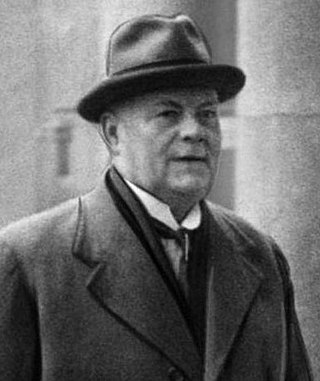
Valdemar Henckel was a Danish businessman and real estate developer. He founded Kalundborg Shipyard in 1918.
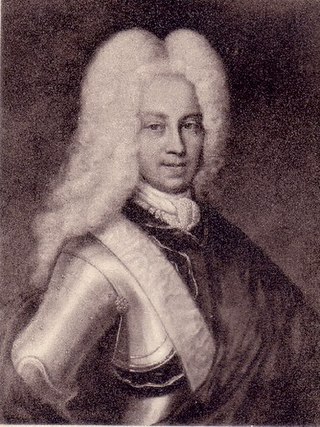
Adam Christopher (von) Knuth was the first Count of Knuthenborg. He established the manor of Knuthenlund. He was married twice, first to Hedevig Ulrikke Luxdorph and second time to Ida Margrethe von Reventlow.

Høvdingsgård is a manor house and estate located just east of Mern, Vordingborg Municipality, Denmark. The Late Neoclassical, two-storey main building is from 1852 but was widened in 1901. Anders Lassen, the only non-Commonwealth recipient of the British Victoria Cross in the Second World War, was born on the estate in 1920.
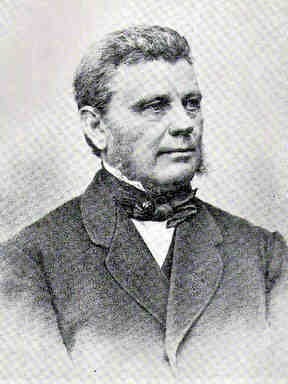
August Willads Bech was a Danish landowner. He owned Valbygård at Slagelse and Borupgård at Borup. Valbygård is still owned by his descendants.

Birkendegård is a manor house and estate located 6 km east of Kalundborg. The two-storey, Renaissance Revival style main building is from 1954 and was designed by Christian Tybjerg.

Øbjerggaard is a manor house and estate situated east of Køng, midway between Næstved and Vordingborg some 90 km (56 mi) south of Copenhagen, Denmark. One of 12 new manors created when Vordingborg Cavalry District was dissolved in 1774, it was initially the site of a textile factory established by Niels Ryberg. The current main building from the 1840s is now known as Ny Øbjerggaard. The old headquarters of the textile factory, Gammel Øbjerggaard, constructed by Ruberg in 1780 and listed on the Danish registry of protected buildings and places in 1945, is now home to Køng Museum. The current owner of the estate, Peter Eriksen Oxholm Tillisch, resides at Rosenfeldt, his other estate, while Ny Øbjerggaard is operated as a bed and breakfast.
References
- 1 2 3 4 5 6 "G. Faye". Dansk Biografisk Leksikon (in Danish). Retrieved 16 June 2022.
- ↑ "Øbjerggaard". danskeherregaarde.dk (in Danish). Retrieved 12 September 2021.
- ↑ "Brøstrup". danskeherregaarde.dk (in Danish). Retrieved 7 October 2019.
- ↑ "Industriens Mænd" (in Danish). Ingeniøren . Retrieved 17 January 2020.